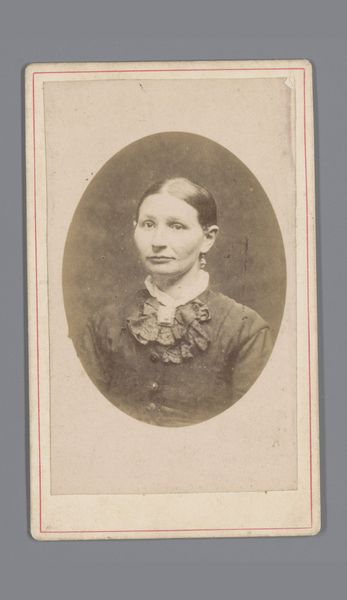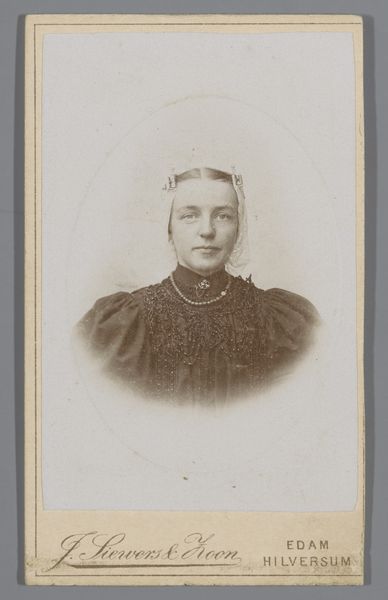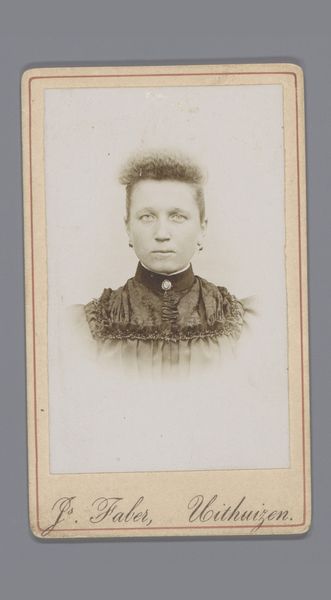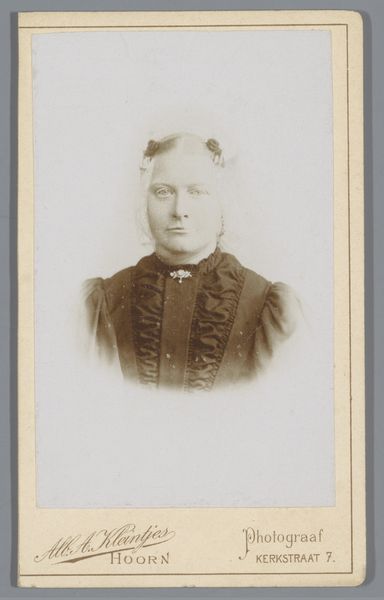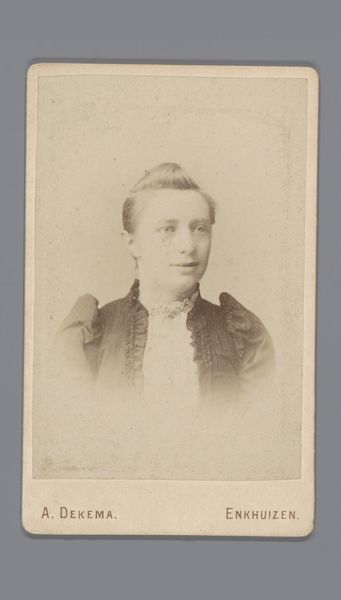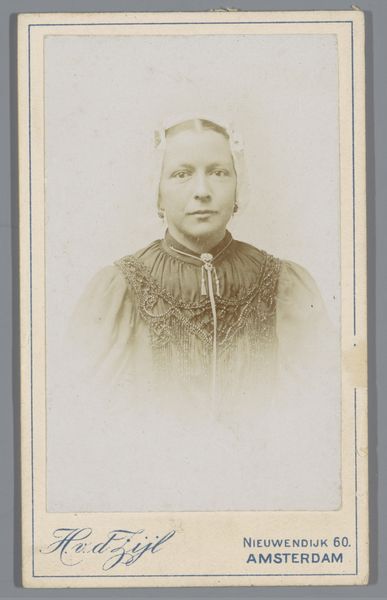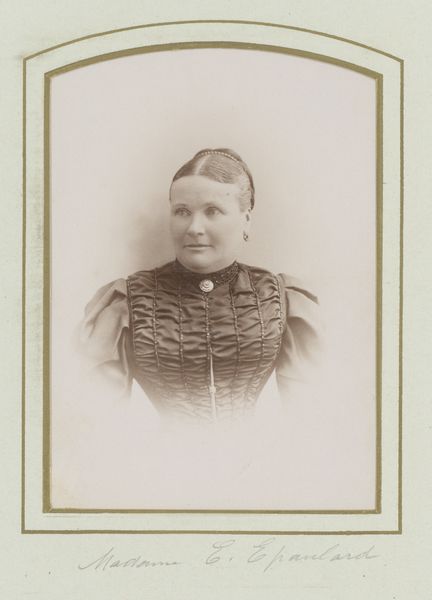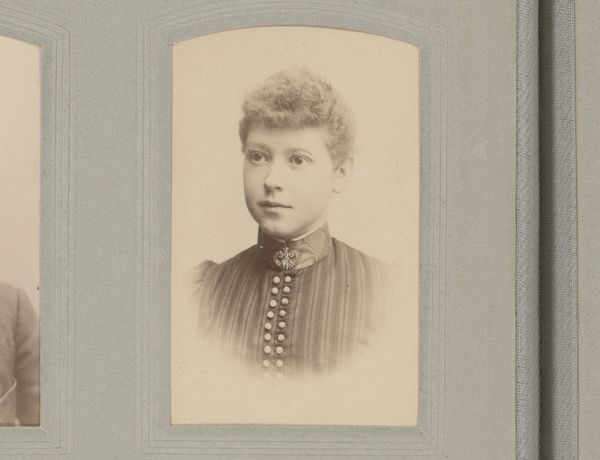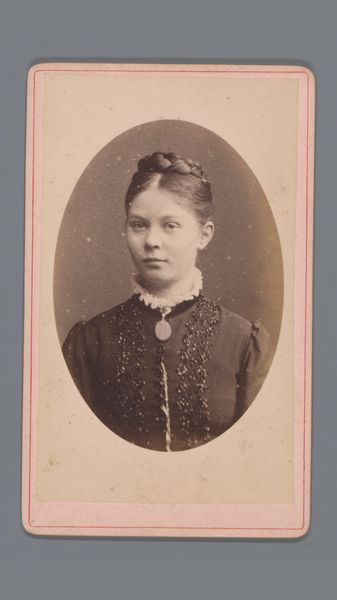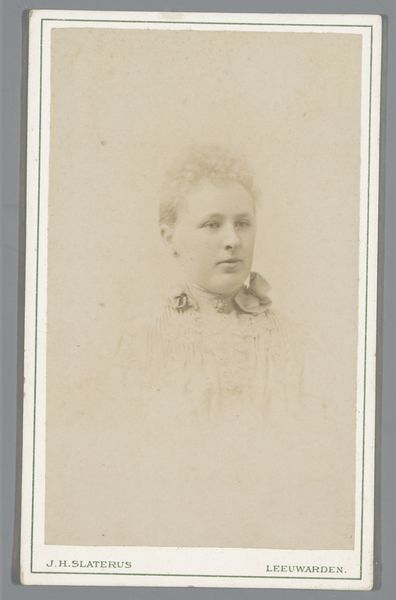
photography, gelatin-silver-print
#
portrait
#
photography
#
gelatin-silver-print
Dimensions: length 103 mm, width 62 mm
Copyright: Rijks Museum: Open Domain
Editor: Here we have H. van der Zijl's "Portret van Trui Hendriks," a gelatin silver print from sometime between 1886 and 1908. It's quite formal and almost feels like it's trying to tell me something about the sitter's life. What aspects of the portrait do you find most revealing about the subject's world? Curator: That formality you sense speaks volumes, doesn’t it? Think about the rise of photography during this period. It democratized portraiture, offering access to more social classes than painting ever did. This portrait, however, still retains a certain level of staging, almost a performance. Do you notice how her gaze confronts us directly? It’s assertive, but is it truly empowering or simply reflecting the constrained roles available to women at the time? The sitter's life intersected class, gender, and societal expectations. Editor: I see what you mean. Her clothing and jewelry indicate a certain social standing, but there's a reserve in her expression. Curator: Exactly! It begs the question: To what extent was Trui Hendriks able to self-define? How much control did she have over her own image and representation within a patriarchal society? This portrait becomes a site of contestation between visibility and agency. Editor: So, we are really looking at a story about the push and pull between personal expression and social constraint in a particular moment in time. I'll definitely think differently about portraiture now! Curator: Precisely. By exploring the social and historical forces shaping her life, the work speaks not just about Trui Hendriks but about broader struggles around self-determination that are relevant even now.
Comments
No comments
Be the first to comment and join the conversation on the ultimate creative platform.

